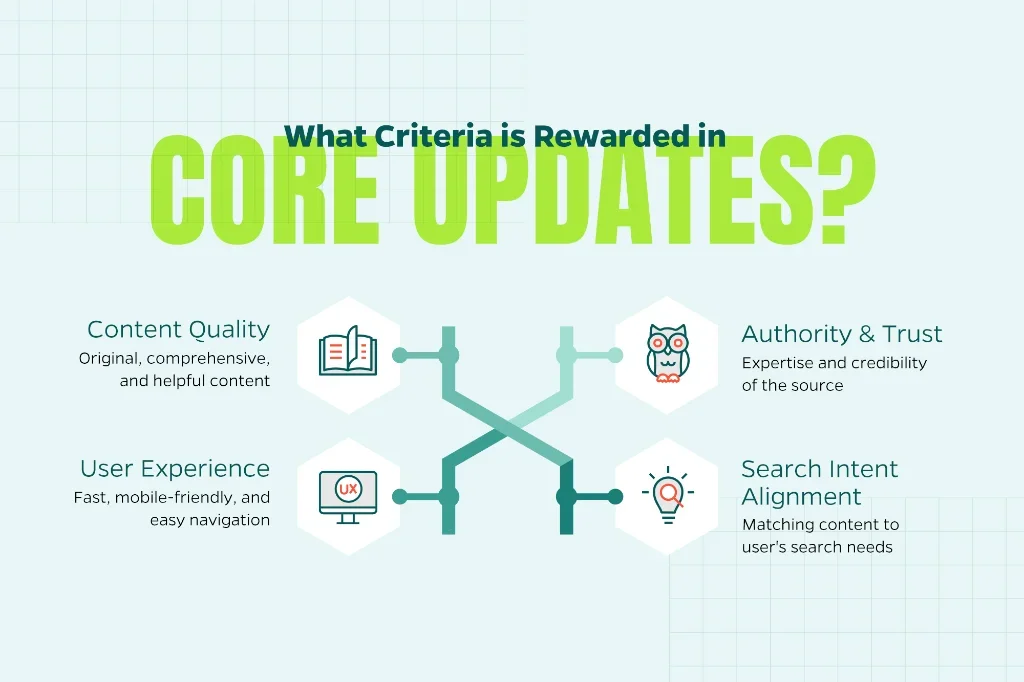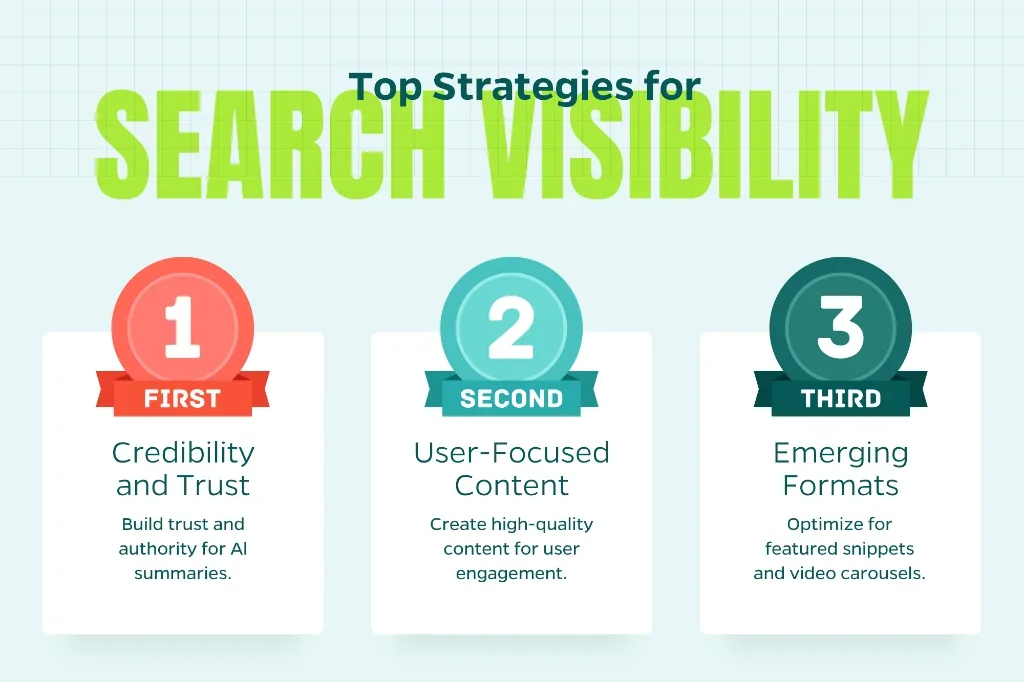If you’ve been around SEO for any length of time, you know the only constant is change—especially when it comes to Google. Every few months, the search giant rolls out a core update, and when it does, websites across the web can see their rankings rise, fall, or shuffle around. For business owners and marketers, these shifts can feel unsettling, but they don’t have to spell disaster. In fact, if you understand what Google is aiming for, core updates can work in your favor.
Let’s break down what these updates mean, where Google is headed, and how you can keep your SEO strategy resilient.
A Brief History: The Evolution of Google’s Algorithm
Google launched in 1998 with a simple but revolutionary idea: rank pages based on how many other sites linked to them. That was enough to make it far better than other search engines at the time. But as SEO practitioners quickly learned, anything that can be gamed will be gamed. Enter keyword stuffing, link farms, and other tactics designed to trick the algorithm.
So, Google’s response was a series of updates designed to reward quality and punish manipulation. Some of the most notable include:
- Florida (2003): One of the first major shakeups, targeting sites stuffed with keywords.
- Panda (2011): Took aim at thin, low-value content and rewarded sites with original, helpful information.
- Penguin (2012): Focused on unnatural backlink profiles and link schemes.
- Hummingbird (2013): Marked a shift toward semantic search, better understanding of intent, and conversational queries.
- RankBrain (2015): Introduced machine learning into the ranking process.
- Medic (2018): Impacted “Your Money or Your Life” sites, emphasizing expertise and trustworthiness.
- Page Experience (2021): Factored in speed, mobile friendliness, and overall usability.
Now, fast forward to today. Google’s updates are more frequent and subtle, but the trend is clear: search is moving toward rewarding relevance, trust, and user experience.
What Core Updates Really Do
It’s tempting to think of core updates as “punishments,” but that’s not how they work. They’re more like Google adjusting its “grading system” to reward quality.
Think of it as a school changing its grading rubric. Students who had A’s might now have B’s—not because their work got worse, but because the criteria shifted. Similarly, if your rankings drop after a core update, it doesn’t mean your site is “broken.” It just means that, relative to others, Google now views some content as more relevant.
Core updates usually affect:
- Content quality: Is it original, comprehensive, and genuinely helpful?
- Authority and trust: Does it come from a source with expertise and credibility?
- User experience: Is the site fast, mobile-friendly, and easy to navigate?
- Search intent alignment: Does the content match what the user is really looking for?

How Businesses Can Adapt
The natural question is: What can you do when Google makes changes you can’t control? The answer lies in focusing on what you can control—your strategy, your content, and your user experience. By employing the strategies below and using the right tools, you can improve your chances of SEO success and avoid mistakes.
1. Double Down on People-First Content
Google has been clear: content written primarily to manipulate rankings won’t last. Instead, focus on articles, guides, and resources that answer real customer questions.
Example: A home services company saw its blog traffic drop after an update. The culprit was dozens of short, surface-level posts stuffed with keywords like “fix leaky faucet.” They turned things around by rewriting those posts into detailed DIY guides—complete with step-by-step instructions, images, and professional tips. The company’s rankings bounced back within months.
2. Build and Demonstrate Authority
Authority isn’t just about backlinks anymore—it’s about being a trusted voice in your industry.
Example: A financial planning firm lost ground after a core update that emphasized E-E-A-T (Experience, Expertise, Authority, Trustworthiness). Consequently, they added author bios that showcased the advisors’ credentials, citing reputable financial sources in their blog posts, and publishing client case studies. Over time, their content regained visibility because it clearly reflected subject-matter expertise.
3. Prioritize Technical Health and User Experience
Even the best content won’t perform well on a slow, confusing site.
Example: An e-commerce brand noticed a ranking dip even though its content hadn’t changed. A site audit revealed sluggish load times and a clunky mobile checkout. After optimizing images, improving mobile design, and streamlining navigation, their organic visibility improved—proving that SEO and UX go hand in hand.
4. Diversify How You Deliver Value
Search isn’t just text anymore. Google surfaces videos, FAQs, product listings, images, and more. Businesses that cover their topics in multiple formats are more likely to meet users where they are.
Example: A B2B software company had dozens of blog posts but struggled to rank against bigger competitors. They repurposed top articles into explainer videos and infographics, then embedded them on their site and shared them on LinkedIn. Not only did engagement rise, but their content began showing up in video and image search results, creating more entry points for users.
5. Stay Calm and Think Long-Term
Rankings can fluctuate right after a core update. Don’t panic. Instead, look at trends over time.
Example: A local law firm saw its organic traffic drop 20% after an update. Instead of overreacting, they kept publishing useful content (like FAQs about state-specific laws), improved their site speed, and earned local press mentions. Three months later, their traffic not only recovered but surpassed pre-update levels.
Looking Ahead: The Future of Search
With the rise of AI-driven search, such as Google’s AI Mode, we’re entering a new phase. Instead of just showcasing a list of links, Google is increasingly delivering direct, summarized answers.
What does this mean for businesses?
- SEO is no longer just about “ranking #1.” It’s about earning visibility wherever users interact with search results—featured snippets, People Also Ask, video carousels, and AI summaries.
- The emphasis on trust and authority will only grow, since Google wants to feed its AI summaries with credible, high-quality sources.
- Brands that invest in credibility and user-focused content will be best positioned to show up in these emerging formats.

Final Takeaways
Core updates can be nerve-wracking, but they’re not the enemy. They’re a reminder of what SEO has always been about: providing value.
If your site consistently demonstrates expertise, authority, and trustworthiness—and if you make your content genuinely helpful to real people—you won’t just survive the updates. You’ll build a foundation that grows stronger with each change Google makes.
The best strategy isn’t chasing algorithms. It’s building a brand that deserves to be found. Do you want more help maximizing your SEO ROI? Straight North can help. Reach out to our team to get help on a comprehensive SEO strategy.








